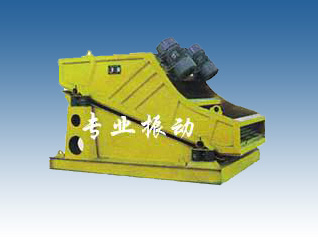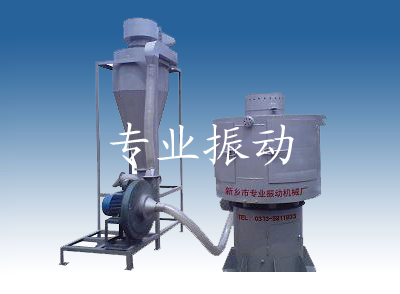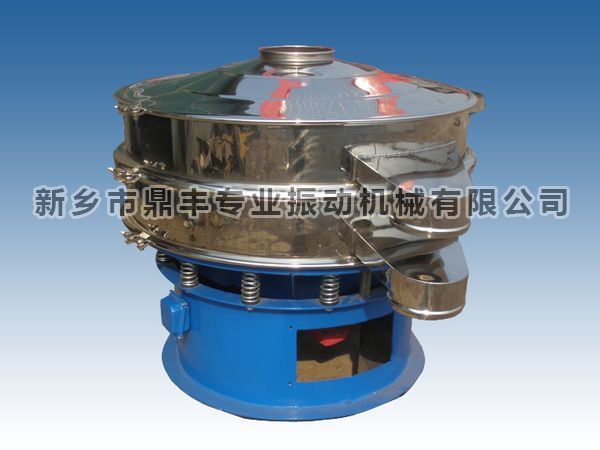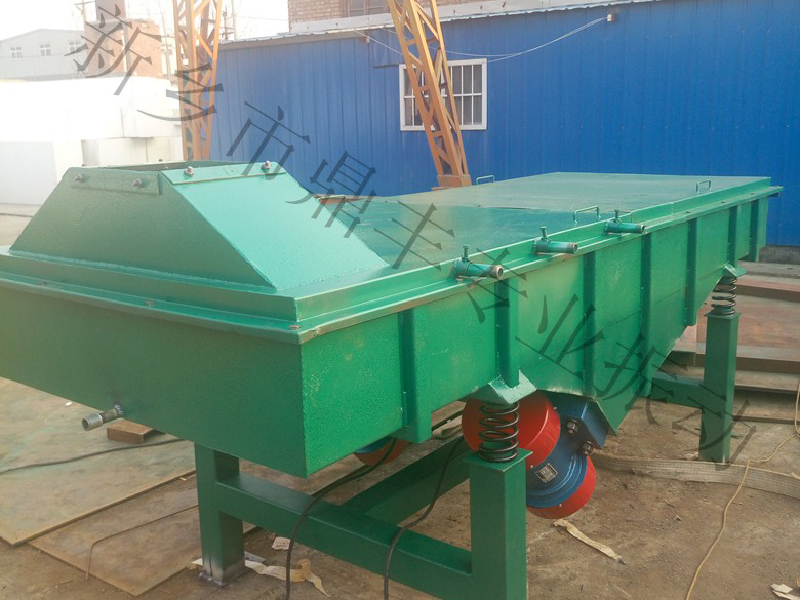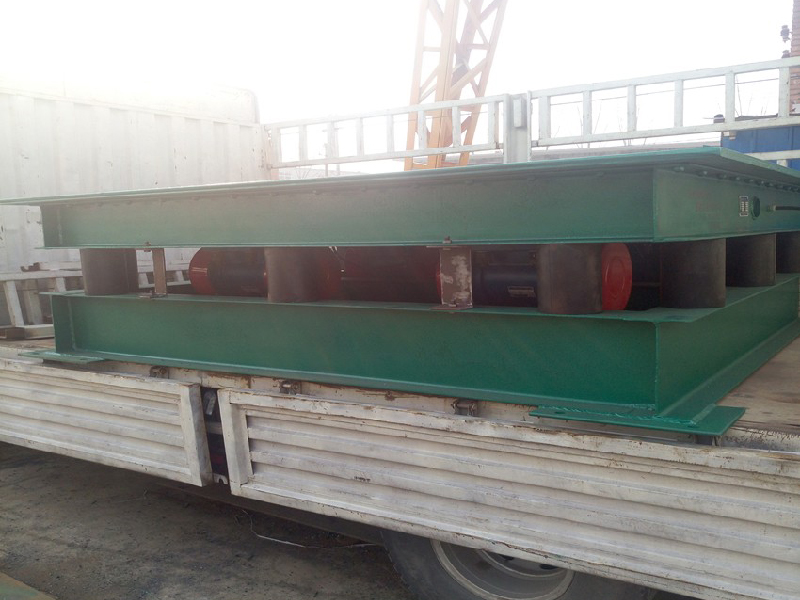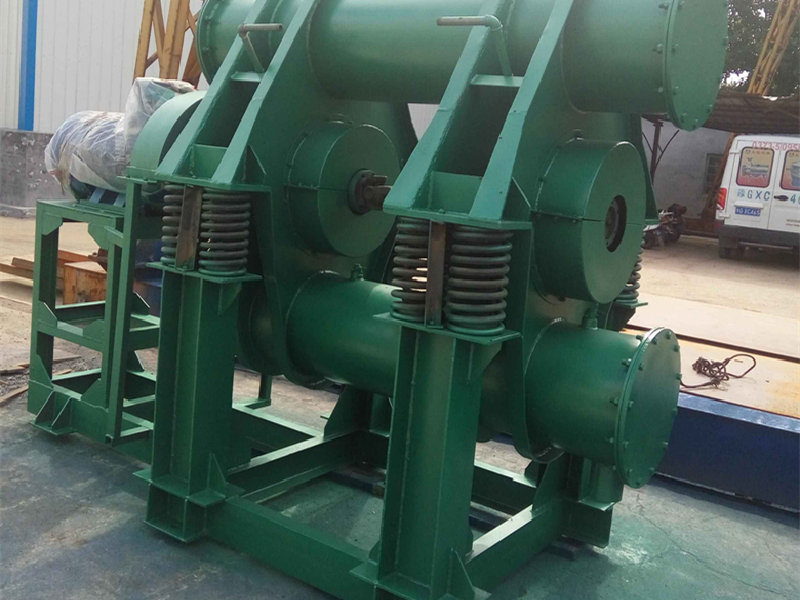1、 Overview of vibrating screen machine
The vibrating screen machine uses a vibration motor as a vibration source to excite the material, causing it to be thrown up on the screen while moving forward in a straight line. The material is evenly fed into the feed inlet of the screen machine from the feeder, and through multiple layers of screens, several specifications of sieved material and undersized material are produced and discharged from their respective outlets. It has low energy consumption, high output, simple structure, easy maintenance, fully enclosed structure, no dust overflow, automatic discharge, and is more suitable for assembly line operations.
2、 The principle of vibrating screen machine
The linear vibrating screen is driven by dual vibration motors. When the two vibration motors rotate synchronously and in reverse, the excitation force generated by their eccentric blocks cancels each other out in the direction parallel to the motor axis, and forms a combined force in the direction perpendicular to the motor axis. Therefore, the motion trajectory of the screen machine is a straight line. The two motor shafts have an inclination angle relative to the screen surface. Under the combined force of excitation force and material self gravity, the material is thrown up on the screen surface and undergoes a jumping forward linear motion, thereby achieving the purpose of screening and grading the material. Can be used to achieve automated operations in assembly lines. It has the characteristics of low energy consumption, high efficiency, simple structure, easy maintenance, and fully enclosed structure without dust spillage.
3、 Composition of vibrating screen machine
This screening machine is mainly composed of a vibrating screen frame, screen plate, discharge port, cover plate, vibrating motor, motor pedestal, shock-absorbing spring, and support legs. The sieve plate, discharge port, and cover plate can all be quickly replaced.
1. Vibration screen frame: The overall frame is welded from 304 stainless steel and lined with PU.
2. Screen plate: Made of high-purity PU, free of oil, grease, and metal pollution, meeting the vibration intensity during use.
3. For maintenance methods of vibration motors, please refer to the vibration motor user manual.
4. Motor pedestal: used for installing motors, the screws must be checked for tightness before use.
5. Shock absorber spring: prevents vibration from being transmitted to the ground while supporting the entire weight of the screen box. The spring must be installed perpendicular to the ground.
4、 Installation and Debugging:
After the installation of the new screening machine, it should be inspected according to the following requirements:
1. Check the insulation resistance of the vibration motor winding to ground. If it is lower than 0.5 megohms, it must be dried before use.
2. Check the wiring and operation direction of the motor, both motors must run in reverse.
3. Check the connecting screws of the screening machine and motor, which must be tightened.
4. Check whether the bracket is installed vertically and stably, and the pillar should not be suspended.
5. If all the above items are correct, the machine can be started for testing. Let it sit idle for half an hour and observe the screening machine. The screening machine should start quickly, run smoothly, and have no special noise before it can be used normally.
5、 Operating procedures:
1. Preparation: The operator should first check whether the sieve plate is intact, whether the connecting screws are firm, and whether the spring bracket is normal.
2. Start: Run the machine empty for several minutes until it is normal before feeding and production can begin.
3. Movement: During normal production, operators are not allowed to leave their posts casually to avoid accidents.
4. Shutdown: First stop the feeder, then stop the screening machine.
6、 Repair:
1. The operator must check the sieve and screening quality every day during work, and ensure timely replacement of the sieve.
2. Each shift should regularly check the connecting bolts to prevent loosening.
3. Minor repairs twice every six months and major repairs once a year.
4. The use and maintenance of vibration motors should be strictly carried out in accordance with the vibration motor manual.
7、 Vibration motor usage instructions and maintenance
Product features:
1. The combination of excitation force and output force is appropriate, resulting in a lightweight and compact body.
2. Due to the use of smooth rotation to generate vibration, the noise is low.
3. Fully enclosed structure, capable of working under any dust conditions without explosion-proof requirements.
4. Reasonable design and long service life.
5. The vibration motor only needs to adjust the eccentric blocks on the outer sides of both ends to form a certain angle with the inner eccentric block, and the excitation force can be infinitely adjusted.
6. Multiple units can synthesize various forms of vibration to meet various operational requirements.
7. The variety of models and complete specifications can meet the working needs of various vibration machinery.
8、 Usage conditions:
Vibration acceleration: not exceeding 20G (G is the acceleration due to gravity);
Environmental temperature: -40 ℃ -50 ℃ (power consumption should be reduced if it exceeds 50 ℃);
Host excitation power: not exceeding the specified value on the nameplate, otherwise the excitation force should be reduced for use;
Rated temperature rise: 65 ℃ Rated voltage: 380V Rated frequency: 50HZ Insulation level: B
Phase number: 3 Connection method: Y/△ Working mode: Continuous (S1) Installation mode: Any direction Protection level: IP55
9、 Working principle of vibration motor:
1. This product is composed of a specially designed motor and an eccentric block. When the motor rotates, the eccentric block generates excitation force that is transmitted to the vibrating machinery through the motor.
2. The vibration motor only needs to adjust the eccentric blocks on the outer sides of both ends to form a certain angle with the inner eccentric block, and the excitation force can be infinitely adjusted.
Excitation force: Fm=G/g × r × ω 2
G: Eccentric block mass
g: Gravitational acceleration
r: The distance between the center of mass of the eccentric block and the axis of rotation
ω: Motor rotation angle frequency
Amplitude: S=1.8/(N/100) 2 × Fm/G
Fm: excitation force (N) G: reference weight N: rotational speed S: double amplitude (mm)
Installation, lifting, adjustment, use and maintenance
10、 Before installation and use, it is necessary to carefully read the instruction manual.
This series of vibration motors are three-phase 380V50HZ asynchronous motors, enclosed self cooling, and horizontally installed.
When the JZOYZD series vibration motor operates continuously, the surrounding air must not contain corrosive or explosive gases, and the ambient temperature must not exceed 45 degrees Celsius.
During the transportation process or when the vibration motor is idle for a long time, each part should be inspected item by item before use.
Suspend at the casing lifting ring screw during lifting.
The connection plane between the vibration motor and the vibration machinery is 3.2
(1) If the insulation of the winding is affected by moisture, corresponding methods should be used to treat it. A 500V megohmmeter should be used to check the insulation resistance of the winding. When approaching the working temperature (70 ℃), it should not be lower than 0.38 megohms, otherwise it should be dried.
(2) Whether the cable is intact, and if it breaks or is damaged, it should be replaced in a timely manner.
(3) Is the body intact? If there is any damage, please contact us for replacement.
When installing the vibration motor on the vibration machinery, the foundation bolts of the vibration motor must be tightened, and elastic washers must be added under each nut.
At the beginning of the operation of the vibration motor, due to the running in between the bolts, nuts, and base planes, the fastening force will be reduced and small looseness will occur. Therefore, the foundation bolts of the motor should be tightened multiple times during the initial operation. At the beginning, they should be tightened once a day, and after two weeks, they should be checked and tightened once a week.


